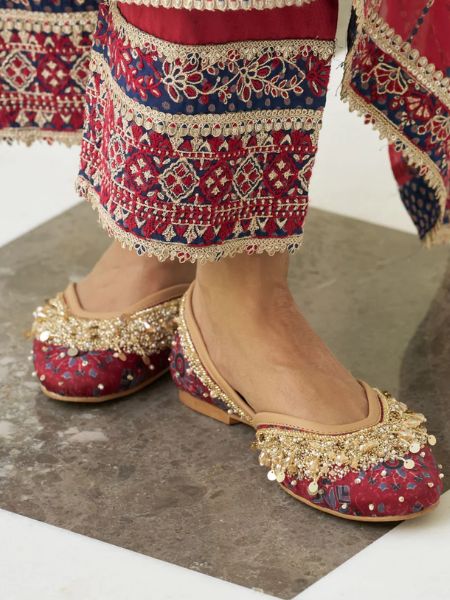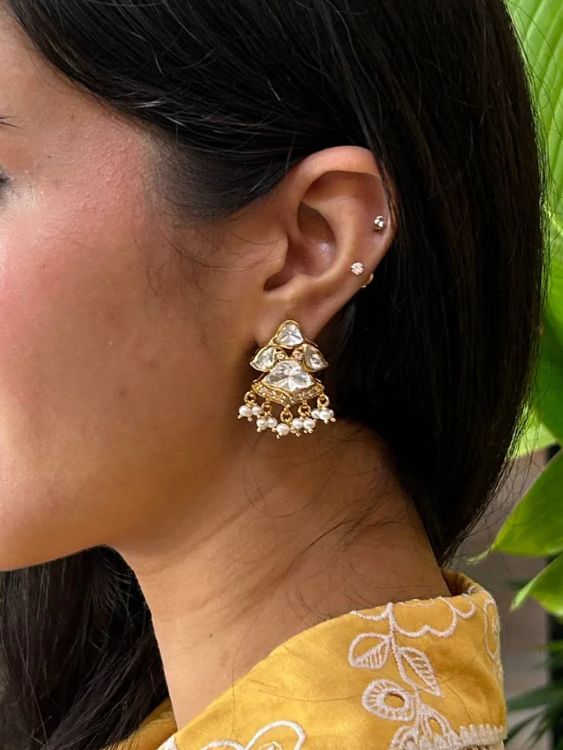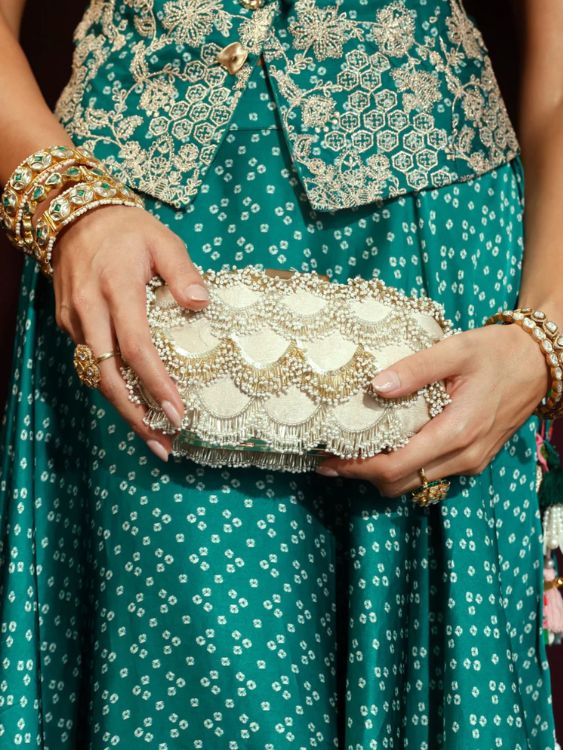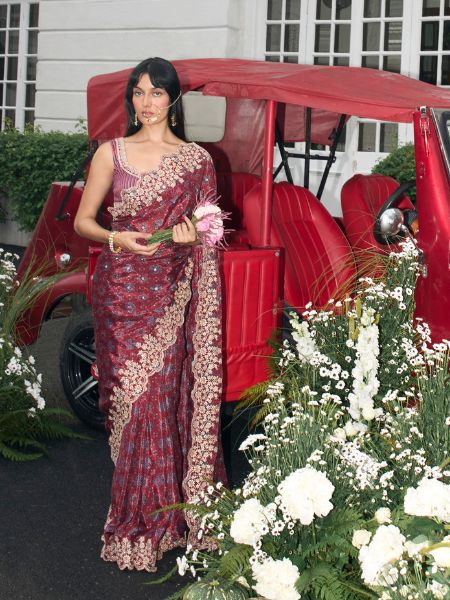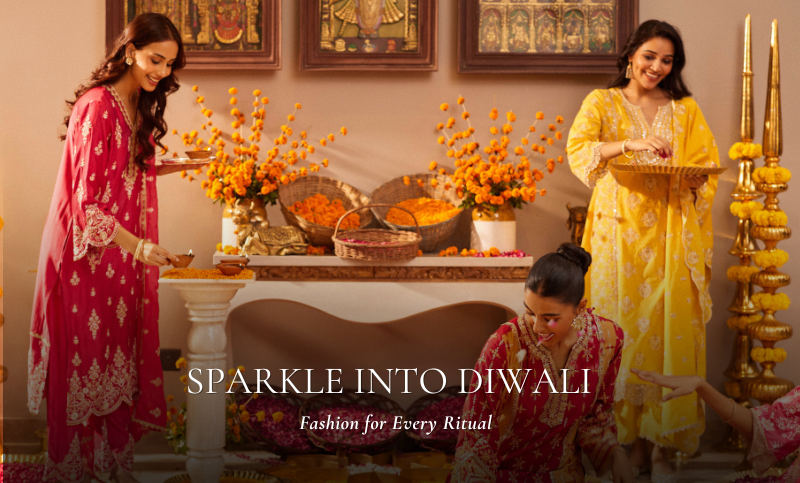The Palette Of Red:
The History and Tradition of Wearing Red on Karwachauth
Karwachauth is an important festival celebrated by married women in India, as an ode to love and togetherness. As a mark of their undying love and devotion to their husbands, married women fast from sunrise to moonrise. The day is extremely cherished among those who celebrate it each year.
Red is a color that is deeply embedded in the tradition of Karwachuath. As the most auspicious color in Indian culture, it also symbolizes love and prosperity, making it the ideal color for sacred festivities. Red also symbolizes strength and adds greater depth to the heartfelt rituals of Karwachauth. Vibrant red, richly adorned Karwachauth outfits capture the essence of feminity, beauty, faith, and timeless traditions.
Historical Origins
The tradition of wearing red on Karwachuth traces its origins to ancient Hindu culture, according to which red has always been the mark of marriage, love, and the life-giving force in a woman. Historically women are known to adorn themselves in red after marriage to signify loyalty and devotion to their husbands. This practice extends into festivals like Karwachauth.
Because the celebration honors the husband's longevity and wealth, red was an obvious choice because of its association with passion, dedication, and auspiciousness. While customs have changed over the ages, respecting the rich cultural history of the color red hasn't changed.
Evoution of Karwachauth fashion
The evolution of Karwachauth fashion reflects shifts in cultural customs, social standards, and individual expression. The transition from an understated to an ornate display of style and elegance is symbolic of the increasing impact of modern trends on this traditional celebration.
Traditionally, women observing Karwachauth would adorn themselves in their wedding attire or at least something similar. The color red was always incorporated for its implication of love and marital bliss. Traditional wear was also been invariably sarees and lehengas with rich embroidery and zari work, which again underscores the event's importance. Accessories sometimes were restricted to some heavy heirloom pieces and simple henna designs that underlined the spiritual purity of the day.
Karwachauth fashion has evolved in tandem with Bollywood, as the event has been portrayed as elegant and romantic on numerous occasions. Movies such as Dilwale Dulhania Le Jayenge and Kabhi Khushi Kabhie Gham have elevated the event to a sophisticated fashion statement. From chiffon sarees to intricately created lehengas, the Bollywood version of Karwachauth pushed Indian ladies to become a little more trendy, preserving all of the traditional glory but adding a touch of glamour.
Karwachauth fashion has evolved into a more adaptable and experimental style in recent years. Although red remains a popular color, women nowadays are willing to experiment with other vibrant colors like pink, maroon, and gold, giving the celebration a more modern feel. Although sarees are still a popular option, contemporary silhouettes like kurta sets, shararas, and anarkalis have also become extremely popular due to their comfort and design. Wearability is increased by lightweight materials like organza, and silk blends.
With this fashion, many women like fusion outfits, which combine traditional attire with current styles or a couple of classic sarees with bold blouses and belts. This development represents the increasing tendency among women to use clothes as a form of self-expression.
The Classic Red Saree
The red saree has a strong cultural and metaphorical meaning for Karwachauth, representing love, commitment, and the sacred connection of marriage. In the Hindu religion, red is considered the color of auspiciousness and is typically worn at significant life events such as marriages. On Karwachauth, a festival that transforms the red saree into a powerful representation of marital devotion, married women fast and offer prayers for their husbands' long lives.
Married ladies have traditionally worn red sarees for this event, which symbolize the fervor, vigor, and strength of their marriage. The vivid color is thought to represent Shakti, the holy feminine spirit, and is auspicious for wealth and good fortune.
Styling Red for Karwachauth
A crimson Karwachauth costume can be styled in a sophisticated yet uncomplicated way. A classic red saree is always a gorgeous choice, especially when paired with delicate jewelry like a delicate necklace or a striking pair of earrings. A red lehenga or anarkali with intricate embroidery could add a sense of both modernism and tradition if you're striving for a more contemporary look. Wear a dupatta embroidered with flowers or zari work to give layers and texture to the red ensemble.
A bold red bindi and classic gold or red bangles are the perfect finishing touches to complete the look and add just the right bit of traditional glam Beaded or gold juttis or mojaris for shoes finish the festive ensemble and guarantee your comfort all day.
Red is a color that is deeply ingrained in the tradition of Karwachauth. As a symbol of love, dedication, and the holy bond of marriage, it represents centuries of cultural legacy and spiritual value, going beyond simple fashion. It has been associated with Karwachauth celebrations for many years – from vivid red sarees that inspire devotion to the elaborate rituals that honor the union of two souls. Every year, women who adorn this auspicious color preserve the time-honored customs of marriage.

